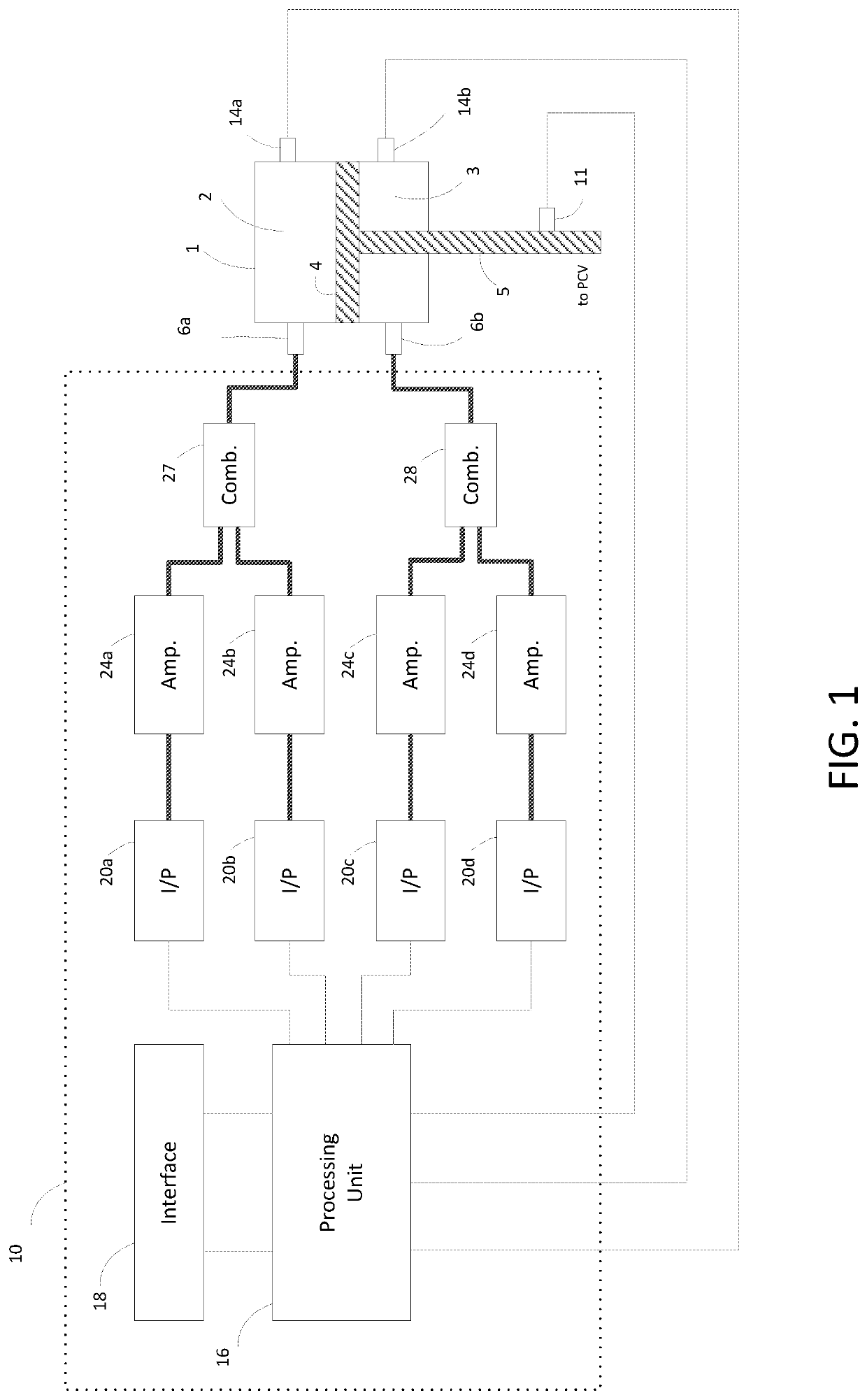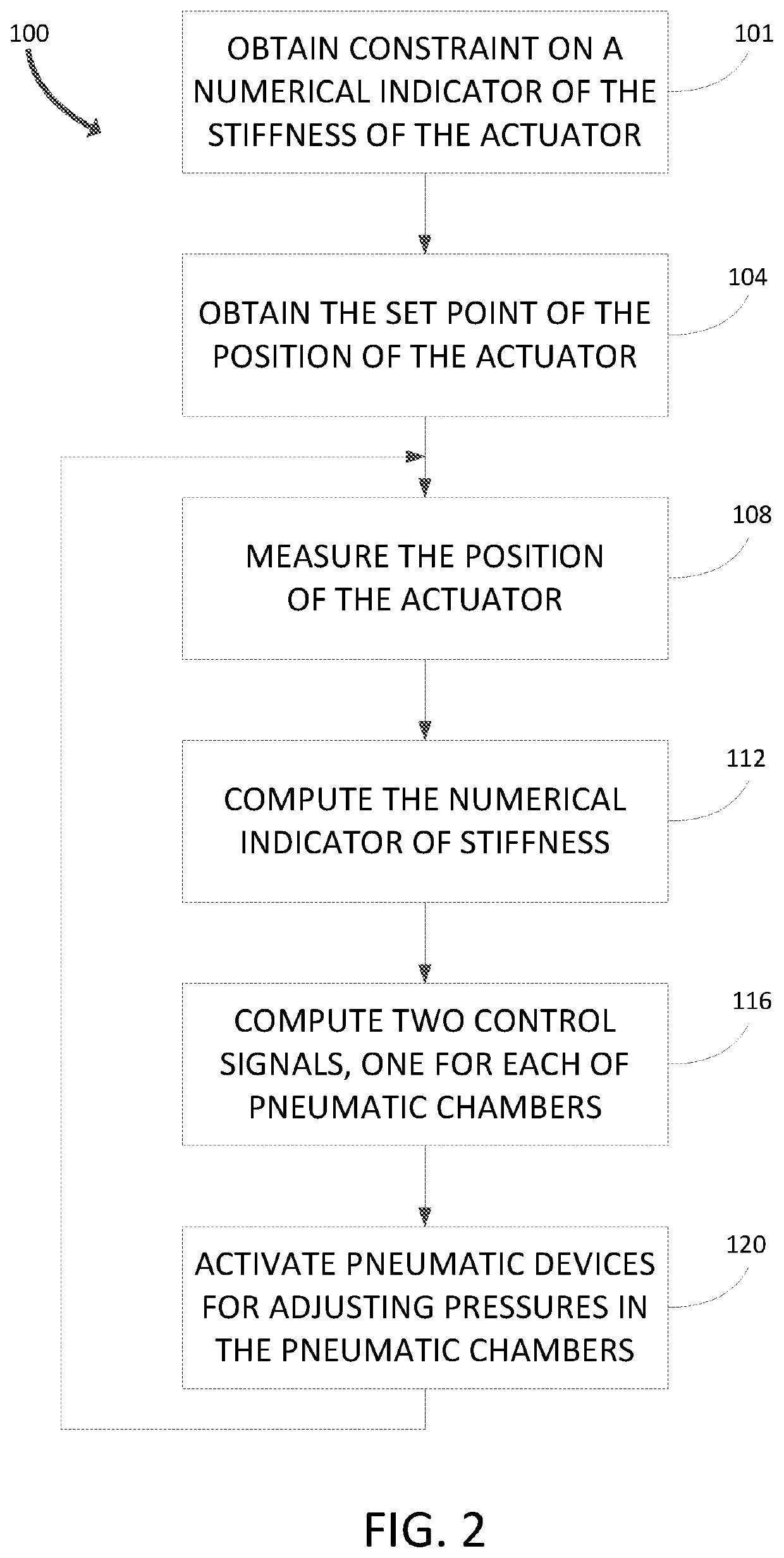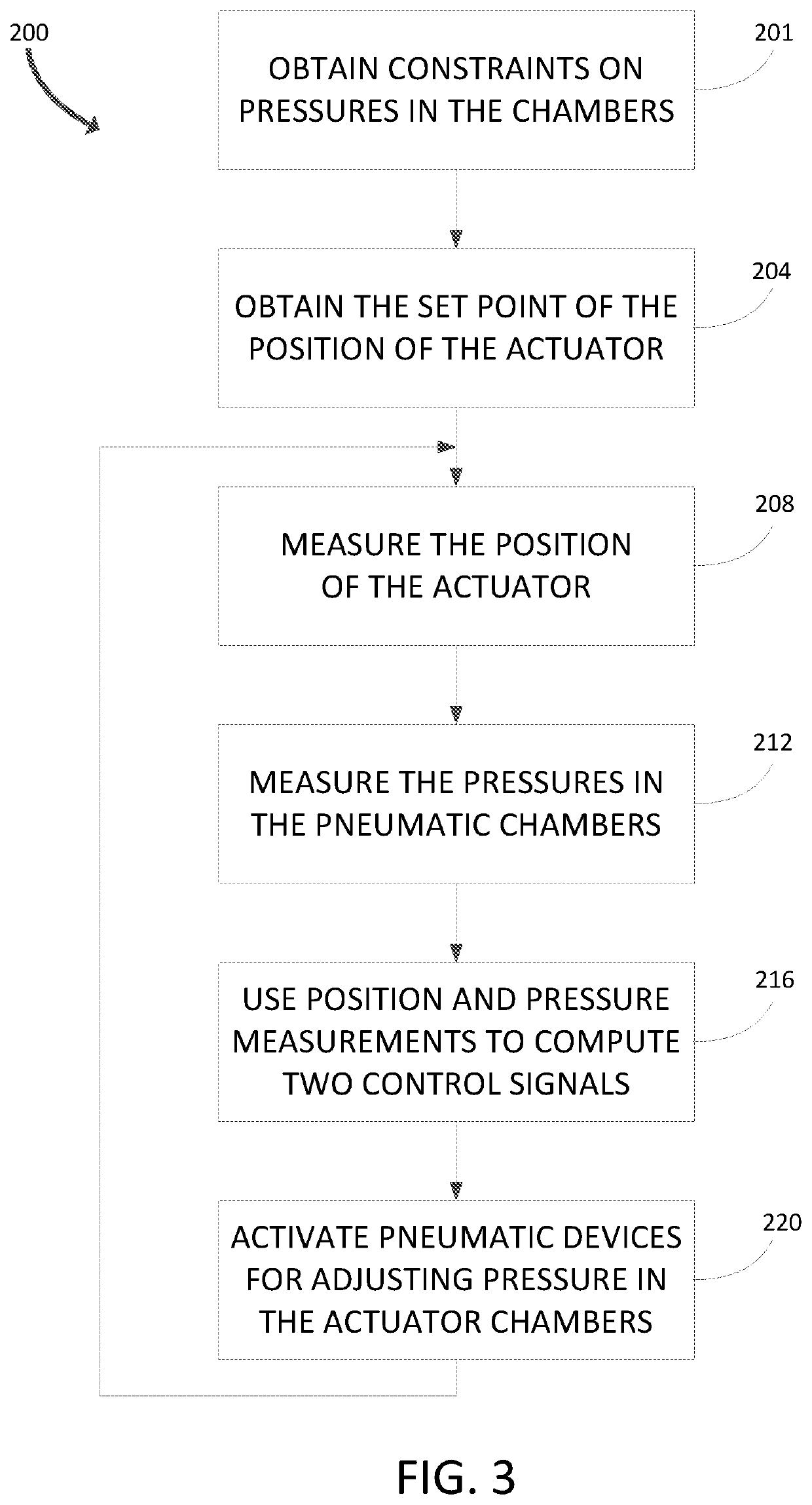Method and apparatus for controlling a double-acting pneumatic actuator
a pneumatic actuator and double-action technology, applied in mechanical equipment, servomotors, operating means/releasing devices of valves, etc., can solve the problems of reducing the life of the actuator and adversely affecting the actuator, so as to increase or decrease the stiffness
- Summary
- Abstract
- Description
- Claims
- Application Information
AI Technical Summary
Benefits of technology
Problems solved by technology
Method used
Image
Examples
Embodiment Construction
[0015]FIG. 1 illustrates an implementation of a system comprising a double-acting actuator 1 and a positioner 10 for controlling the actuator 1. The positioner 10 can comprise the advanced functionality of a digital valve controller (DVC), but FIG. 1 does not illustrate this functionality. The actuator 1 has an upper pneumatic chamber 2 and a lower pneumatic chamber 3, separated by a piston 4 which is attached to a stem 5 connected to a process control valve (PCV). The process control valve may control fluid flow within a process control system, such as a chemical or other process control plant. Chamber 2 has an outlet 6a which can supply air or another control fluid, or conversely exhaust the control fluid from chamber 2. Likewise, chamber 3 has an outlet 6b which can supply or exhaust the control fluid of chamber 3. As the amount of control fluid changes in one or both of the actuator chambers 2 and / or 3, the piston 4 and the attached stem 5 move to a new position.
[0016]An impleme...
PUM
 Login to View More
Login to View More Abstract
Description
Claims
Application Information
 Login to View More
Login to View More - R&D
- Intellectual Property
- Life Sciences
- Materials
- Tech Scout
- Unparalleled Data Quality
- Higher Quality Content
- 60% Fewer Hallucinations
Browse by: Latest US Patents, China's latest patents, Technical Efficacy Thesaurus, Application Domain, Technology Topic, Popular Technical Reports.
© 2025 PatSnap. All rights reserved.Legal|Privacy policy|Modern Slavery Act Transparency Statement|Sitemap|About US| Contact US: help@patsnap.com



